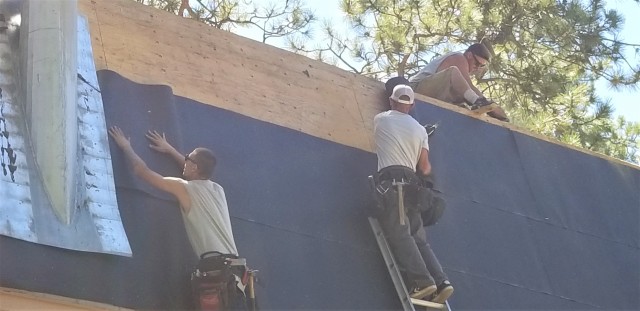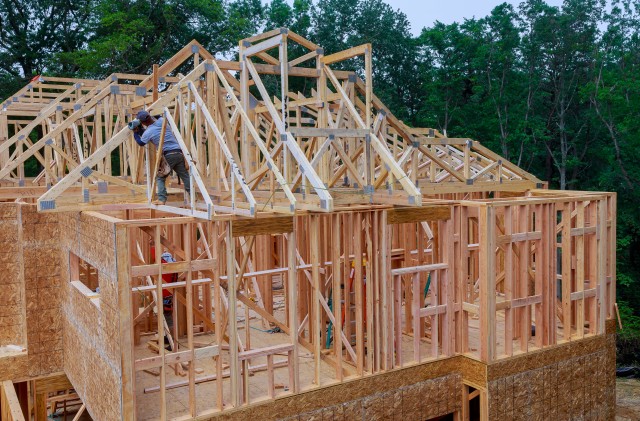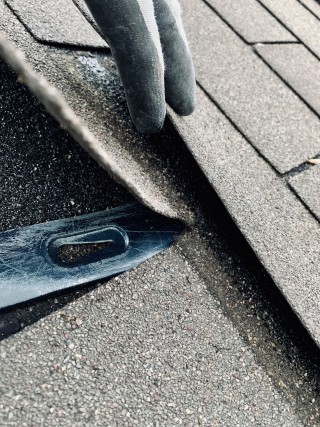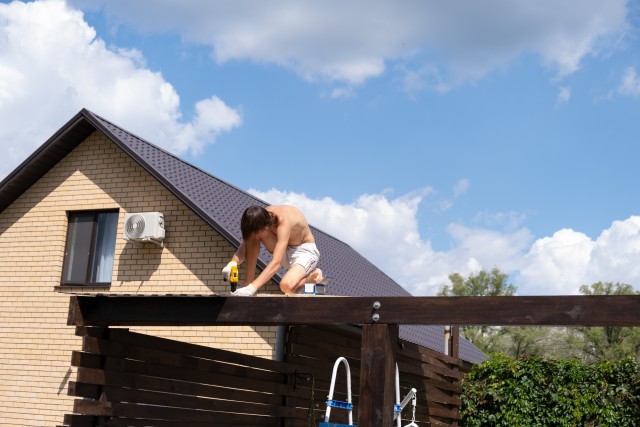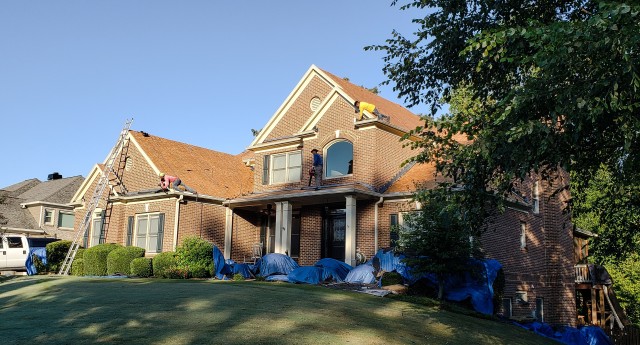Useful Tips on Roof Insulation is an important part of keeping your home temperature regulated and reducing energy costs. Fortunately, there are several options available to help you maximize the insulation in your roof. From adding foam board insulation to using reflective paint, there are a number of ways that you can improve the efficiency of your roof’s insulation. In this blog post, we will be discussing some useful tips on how to properly insulate your roof for maximum protection and savings.
One of the most common ways to insulate a roof is by adding foam board insulation. This type of insulation comes in large sheets that can be cut to your desired size and placed between the rafters or joists of your roof. Foam board insulation is designed to keep air from escaping through cracks in the roof, thus preventing drafts and improving overall energy efficiency. It’s important to note that foam board insulation should not be used in areas with high moisture levels as it may become damaged over time.
Another option for improving your roof’s insulation is using reflective paint. This type of paint is designed to reflect heat away from your home, helping reduce the amount of energy needed to keep your home at a comfortable temperature. It’s important to note that reflective paint can be difficult to apply and may not provide the same level of insulation as other methods. However, it is still an effective way to reflect heat away from your home and improve its energy efficiency.
Finally, adding additional layers of insulation can help reduce the amount of energy lost through the roof. Adding a layer of foam board insulation on top of existing insulation or using extra blankets between rafters will help keep air from escaping and improve your roof’s overall efficiency. It’s important to make sure that any additional layers are securely fastened before installing them in order to maximize their effectiveness.
Table of Contents
ToggleUseful Tips on Roof Insulation and Spray foam insulation
Spray foam insulation is an increasingly popular way to insulate a roof and maximize energy efficiency. This type of insulation is made from polyurethane foam that is sprayed on the underside of the roofing material. The foam expands as it dries, creating an airtight seal that prevents air from escaping and helps keep your home temperature regulated. Not only does spray foam insulation provides superior thermal protection, but it also acts as a sound barrier, reducing noise both inside and outside of your home.
When installing spray foam insulation on your roof, it’s important to follow safety guidelines and wear protective gear such as goggles and gloves. Additionally, this type of insulation should not be used in areas near open flame or heat sources due to its flammable nature. It’s also important to make sure that you are using the correct type of spray foam for your application since some types are designed for specific purposes such as attic insulation or soundproofing.
Spray foam insulation is a cost-effective way to insulate your roof while maximizing its energy efficiency. Not only does it create an airtight seal that prevents drafts from entering your home, but it also acts as an effective sound barrier and can help reduce heating costs significantly. When installing spray foam insulation, however, it’s important to follow safety guidelines and use the correct type of product for your application in order to ensure maximum effectiveness.
Foam insulation
Foam insulation is a popular and effective way to insulate a roof and maximize energy efficiency. This type of insulation is made from rigid foam boards which are cut to fit between the rafters or joists in your roof. Foam insulation helps prevent air from escaping through cracks in the roof, creating an airtight seal that prevents drafts and improves overall energy efficiency. It also acts as a sound barrier, reducing noise both inside and outside of your home.
When installing foam insulation on your roof, it’s important to make sure that all seams are tightly sealed with caulk or tape. Additionally, you should attach the foam boards securely to the underlying structure with screws or nails for maximum effectiveness. You should also take care when cutting the boards so that they fit snuggly in place and create an even surface without gaps or crevices.
Foam insulation is not only an effective way to insulate your home but it can also help reduce heating costs significantly as well. In addition to its thermal protection properties, foam insulation can act as a vapor retarder and help prevent moisture from entering your home and causing damage to walls, floors, and other surfaces. It is also fire-resistant, making it safe for use around heat sources such as furnaces or boilers.
Overall, foam insulation is an easy-to-install and cost-effective option for improving your home’s energy efficiency while providing superior thermal protection. When installed correctly, it can help reduce heating costs significantly by preventing air from escaping through cracks in your roof and creating an airtight seal between interior spaces and the outside environment. For optimal results, it’s important to make sure that all seams are tightly sealed with caulk or tape before attaching the foam boards securely to the underlying structure.
By following these simple guidelines, you can make sure that your foam insulation is installed correctly and effectively for maximum energy efficiency in your home.
Roof and attic insulation
Roof and attic insulation is an essential component of any home in order to maximize energy efficiency and reduce heating costs. Installing high-quality insulation in your roof and attic can help keep warm air inside during the winter months, which can save you money on your utility bills. Additionally, this type of insulation can also act as a sound barrier, helping to reduce noise both inside and outside of your home.
When installing insulation in your roof or attic, it’s important to use the correct type of product for optimal results. Fiberglass batts are a popular choice since they are relatively easy to install and come in long rolls that fit easily between the rafters or joists in the roof structure. They provide superior thermal protection while also acting as an effective sound barrier. Rigid foam boards are another option, providing good levels of thermal protection but with added durability. Spray foam insulation is also an effective choice, creating an airtight seal that prevents drafts from entering your home and maximizing energy efficiency.
Whichever type of insulation you choose, make sure that all seams are tightly sealed with caulk or tape before attaching the boards securely to the underlying structure (if using rigid foam boards). It’s also important to avoid using materials near open flame or heat sources due to their flammable nature. For additional protection against moisture, you may want to add a vapor retarder such as plastic sheeting between the insulation layer and interior walls or floorboards.
With the right combination of products and installation techniques, you can maximize energy efficiency and improve comfort levels in your home by installing high-quality roof and attic insulation. Not only will this help reduce heating costs significantly but it will also provide superior thermal protection while acting as an effective sound barrier between interior spaces and the outside environment.
Roofing insulation
Roofing insulation is an essential component of any home’s roofing system, helping to maximize energy efficiency and keep heating costs as low as possible. Installing insulation in your roof helps to prevent warm air from escaping during the winter months, while also providing superior thermal protection against extreme temperatures outside and reducing outside noise levels.
When it comes to roofing insulation, there are a variety of options available, from fiberglass batts to rigid foam boards and spray foam insulation. Fiberglass batts are a popular choice due to their ease of installation, cost-effectiveness, and ability to act as both a thermal insulator and sound barrier. They can be installed between the rafters or joists in the roof structure for maximum coverage, creating an even surface without gaps or crevices. Rigid foam boards provide good levels of thermal protection but with added durability for long-term performance. Spray foam insulation is also an effective choice due to its ability to create an airtight seal that prevents drafts from entering your home and maximizes energy efficiency.
No matter which type of insulation you choose for your roof, it’s important that all seams are tightly sealed with caulk or tape before securely attaching the boards or rolled material in place. Additionally, materials should never be placed near open flame or heat sources due to their flammable nature. For additional protection against moisture buildup, installing a vapor retarder such as plastic sheeting between the insulation layer and interior walls or floorboards can help keep condensation at bay while further improving energy efficiency in your home.
By investing in high-quality roofing insulation products and professional installation techniques, homeowners can benefit from improved comfort levels while reducing heating costs significantly over time. Not only will this help maximize energy efficiency but it will also provide superior thermal protection while acting as an effective sound barrier between interior spaces and the outside environment.

